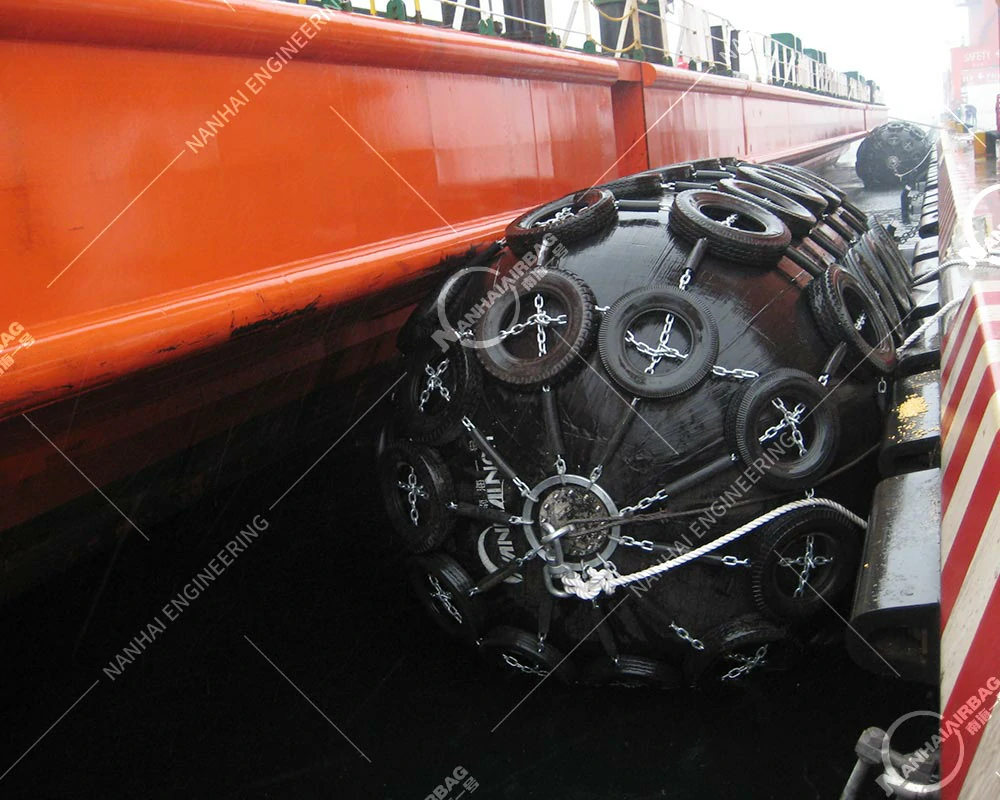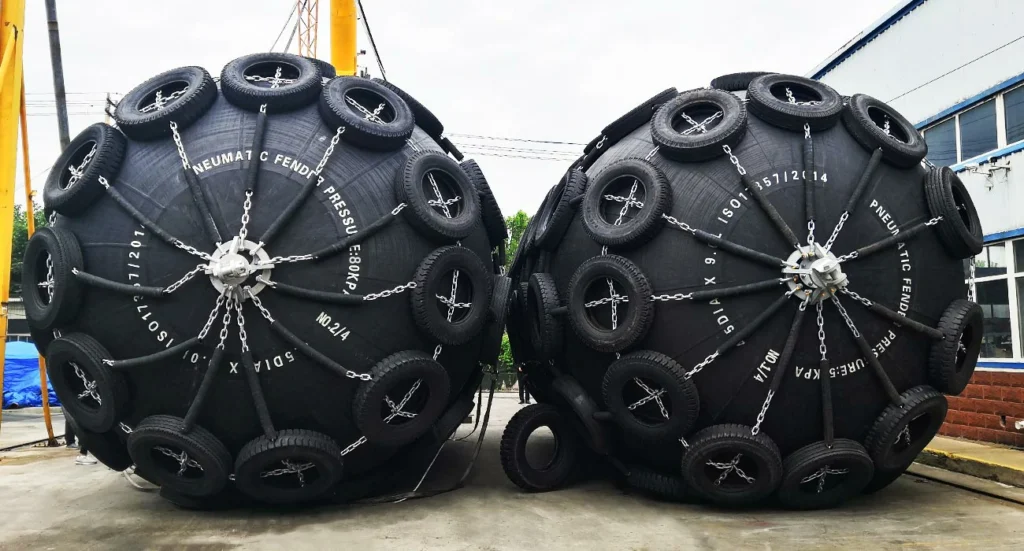Jetty Rubber Fenders: Your Ultimate Guide to Marina Safety
20/05/2025D Rubber Fenders: The Heavy-Duty Guardians of Maritime Safety
27/05/2025

Ever wondered how massive ships dock safely without cratering docks or tearing their hulls? Meet pneumatic fenders—the inflatable guardians keeping ports and vessels intact. Let’s explore why these floating buffers are essential and how they outshine traditional solutions.
🔥 Featured Snippet Alert: What Are Pneumatic Fenders?
Pneumatic fenders are marine fenders filled with pressurized air or foam, designed to cushion ships during docking or collisions. Unlike rigid marine rubber fenders, their flexible, airtight design absorbs impact energy, reducing damage to both vessels and docks. Common in oil rigs, cruise terminals, and heavy-duty ports, they’re a game-changer for maritime safety.
Why This Matters: When Ports Need Pneumatic Fenders Now
Picture this: A cargo ship drifts off-course in fog and slams into a marina. Without sturdy fenders, the collision could sink a dock, destroy a $2M yacht, or spill oil into coastal waters. Here’s the urgent reality:
- Real-World Crisis: In 2023, a supertanker collided with a poorly protected jetty in Rotterdam, causing a 72-hour shutdown and $15M in damages.
- Environmental Disasters: Hard impacts often rupture fuel tanks, polluting oceans.
- Costly Repairs: Fixing damaged docks and ships costs 10x more than installing quality fenders.
Busy ports and harsh climates need pneumatic fenders to prevent catastrophes.
🚢 How Do Pneumatic Fenders Work?
Think of them as giant airbags. When a ship docks, the fender compresses, distributing kinetic energy evenly. The trapped air or foam deforms, slowing the ship’s momentum without rebound. This prevents:
- Cracked Concrete Docks: No more expensive structural repairs.
- Hull Breaches: Protects ships from costly scrapes.
- Downtime: Keeps ports running 24/7.
Pro Tip: Pair them with mooring lines for maximum stability!
🌟 Why Pneumatic Fenders Outperform Rubber Fenders
While marine rubber fenders work for light impacts, pneumatic fenders excel in extreme scenarios:
- Higher Energy Absorption: Ideal for ships over 10,000 tons.
- Space Efficiency: Inflatable designs fit tight harbors.
- Durability: Resist UV rays, saltwater, and extreme temperatures.
Example: Offshore oil rigs use pneumatic fenders to withstand waves and vessel collisions year-round.
🌊 Where Are Pneumatic Fenders Used?
- Commercial Ports: For cruise ships and cargo vessels.
- Oil & Gas Terminals: Handling tankers in rough seas.
- Private Marinas: Protecting yachts and ferries.
💡 Top Benefits of Pneumatic Fenders
- Save $100k+ Per Collision: Prevent one accident and slash repair bills.
- Eco-Friendly: Reduce fuel spill risks by up to 95%.
- Future-Proof: Last 15+ years with minimal maintenance.
🔍 People Also Ask (Related Questions)
- “How are pneumatic fenders different from marine rubber fenders?”
Pneumatic fenders use air/foam for flexible impact absorption, while rubber fenders rely on rigid materials for lighter collisions. - “What ships require pneumatic fenders?”
Supertankers, cruise ships, and cargo vessels over 10,000 tons typically use them. - “Can pneumatic fenders be repaired easily?”
Minor leaks can be patched, but major damage often requires replacement. - “Are pneumatic fenders safe in extreme weather?”
Yes! Their airtight design withstands hurricanes and freezing temps.
🛠️ Ready to Upgrade Your Port’s Safety?
Pneumatic fenders aren’t just an upgrade—they’re a necessity for modern marinas. Whether you’re managing a bustling cargo hub or a luxury yacht club, these fenders save lives, money, and the planet.
Need help choosing the right fender? Ask our experts below! 👇
